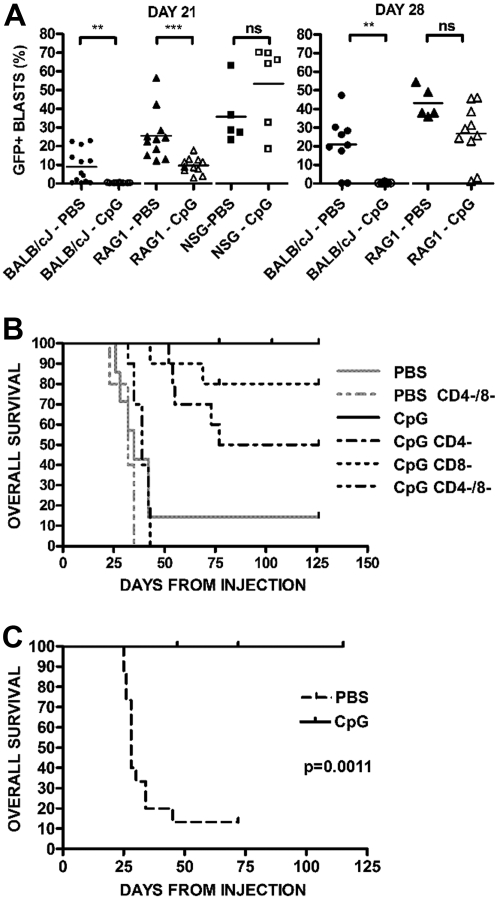Figure 4.
Evidence of innate and adaptive immune responses. (A) CpG ODN activity in wild-type, RAG1−/− BALB/cJ, and NSG mice. Mice were injected with GFP+ ALL and treated with CpG ODN. Percentages of GFP+/B220+ cells in peripheral blood samples on day 21 after injection from PBS- and CpG-treated BALB/cJ wild-type (N = 13 PBS, 10 CpG), RAG−/− (N = 11 PBS, 11 CpG), and NSG (N = 5 PBS, 6 CpG) mice are shown. ***P < .001. **P < .01. NS indicates not significant. The right panel depicts the same mice at day 28, at which point the RAG1−/− mice have no difference between treated and untreated arms. NSG mice in both arms were dead of disease and are not depicted. (B) Survival of PBS- and CpG-treated BALB/cJ with and without T depletion. Wild-type BALB/cJ mice were given syngeneic GFP+ ALL and were treated with CD4- and CD8-depleting antibodies before each CpG ODN treatment. Kaplan-Meier analysis of mice receiving CpG ODN versus PBS controls followed for 4 months. Combined depletion of both CD4+ and CD8+ cells (CD4−/8−) results in a marked decrease in survival from nondepleted, CpG ODN-treated mice (P < .001). (C) Survival in IFN-γ−/− mice. IFN-γ−/− mice were given ALL cells and treated with CpG ODN or PBS, as in panel A, beginning on day 7. CpG ODN-treated mice have significantly prolonged survival compared with PBS-treated control (P < .002).

